Wallpaper for painting: features of choice
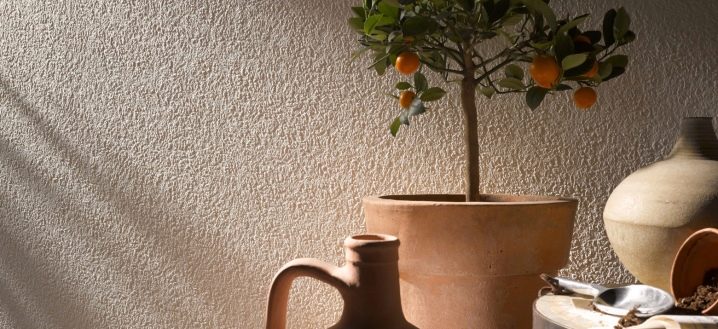
Recently, paintable wallpaper has become more and more popular. And this is not surprising, because the walls covered with them can be repainted several times without buying new coatings and not wasting time preparing the surface by removing the old ones. Of course, those people who are interested in this option for wall decoration need to make a decision about which wallpaper for painting is most suitable for them: the choice depends, first of all, on the type of room, the capabilities of buyers and the subtleties of the interior itself.
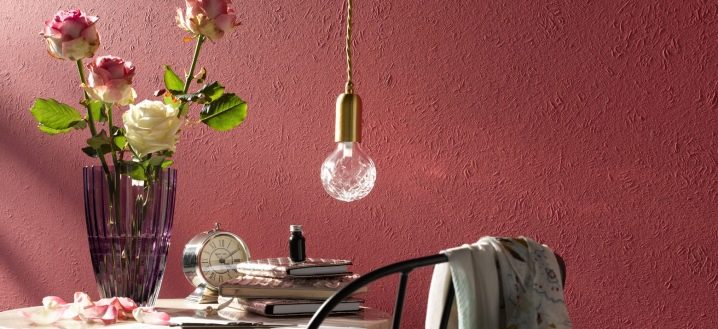
Types: pros and cons
Wall coverings of this type are different and differ from each other. Their differences are due to the materials from which they are made. Distinguish between paper, vinyl (non-woven) and fiberglass types of wallpaper for painting.
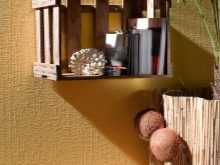
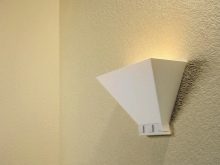

Paper
They look like ordinary wallpaper, but differ from them in that they have two layers according to the duplex principle. They are quite dense and thick, they have a special composition with water-repellent characteristics.
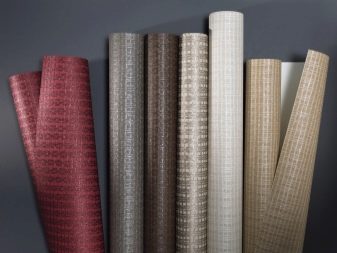
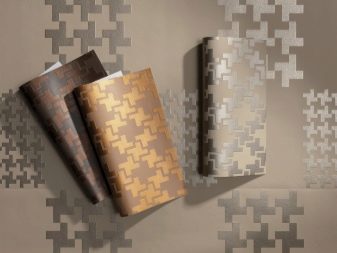
Wallpapers made of this material are textured, their distinctive feature is relief surfaces. Contrary to popular belief, this is not an embossed wallpaper. Wood shavings are placed inside the coating, between the smooth base and the front part. Depending on the size of the chips, either a large or a small pattern is obtained.
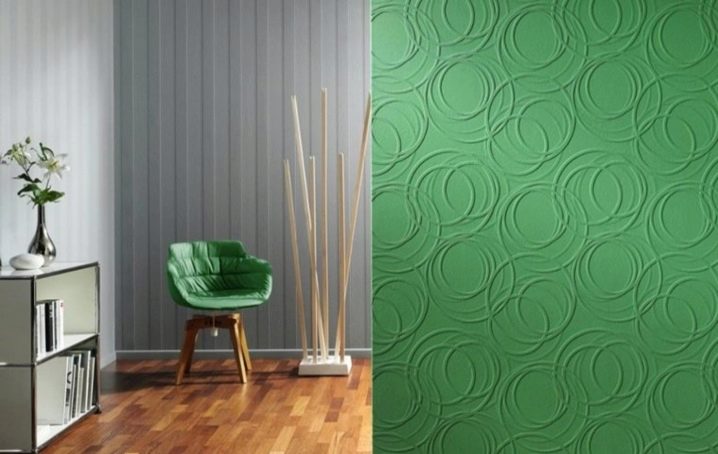
Non-woven
The same as vinyl - these are non-woven backing, which is a dense structural fiber, processed under the press. Such material does not wrinkle and is used as an adhesive surface, and decorative vinyl spraying is foamed and sprayed on the front surface, and that is why it is possible to create three-dimensional patterns.
This type of wallpaper has obvious advantages over paper: it can perfectly mask any irregularities on the walls and even close cracks. Thanks to them, the surface becomes even and more durable.
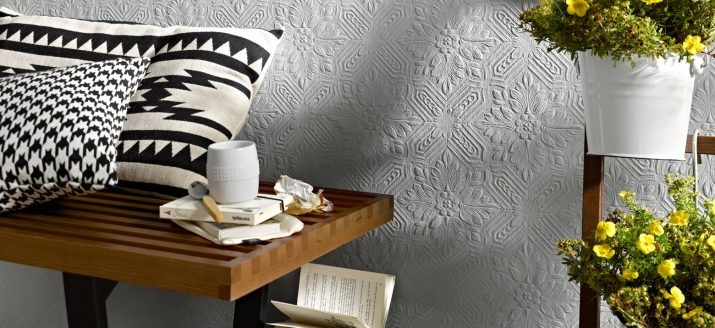

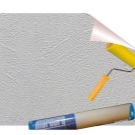
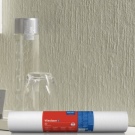
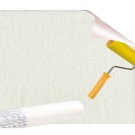
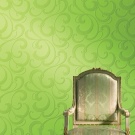
The difference between paper and non-woven models is that the glue needs to be applied only to the wall, and the surface of the latter is pre-equipped with an adhesive base. Due to the reliability and durability of vinyl wallpaper, it is especially recommended to glue them when carrying out cosmetic repairs in newly built houses.
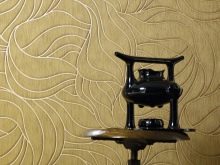
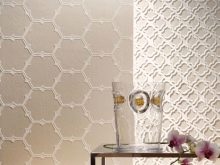
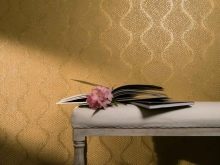
It is known that any "fresh" new building shrinks the walls during the first years of house operation, which leads to irregularities and cracks.
It is precisely these coatings that will save the situation, which will not tear, unlike paper ones, and even keep the crack from further enlarging.
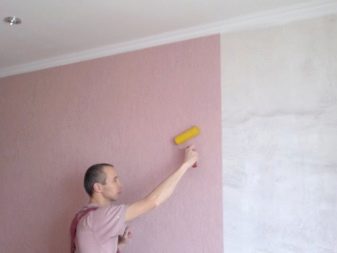
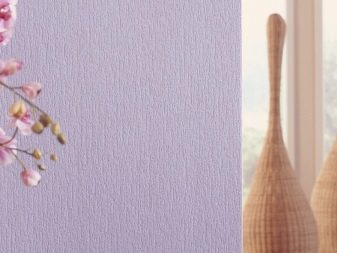
Vinyl
Thick non-woven wallpaper can be repainted ten times or more. However, the foam type of vinyl, which creates even and textured patterns of amazing beauty, is a rather fragile material that should be handled with great care: the pattern can even be scratched with a fingernail. Therefore, special care must be taken both when gluing and when painting.
When the paint dries, the coating will acquire its inherent hardness, and the foam vinyl will no longer be brittle, because when adhered to the paint, it will acquire strength and wear resistance.
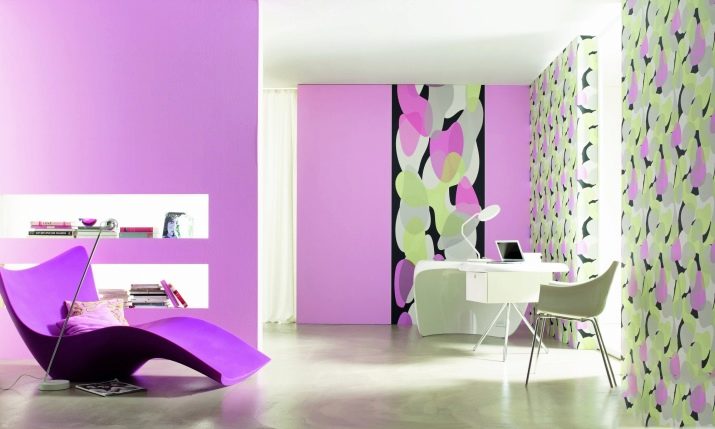
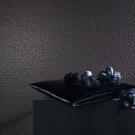
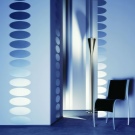
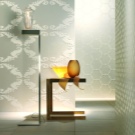
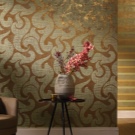

It is not known where the myth came from that vinyl wallpaper is non-flammable and resistant to fire. This is not the case, moreover, when they are in rolls, they burn and tear in exactly the same way as paper ones. That is why it is recommended to start using them as soon as possible for the correct purpose and they must be painted, otherwise they will quickly lose their appearance.
If a fire suddenly occurs, non-woven coatings release toxic chemicals during combustion.
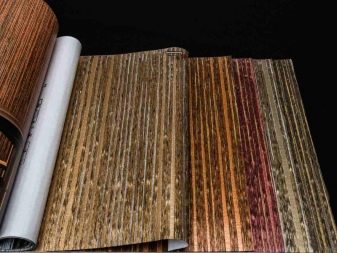
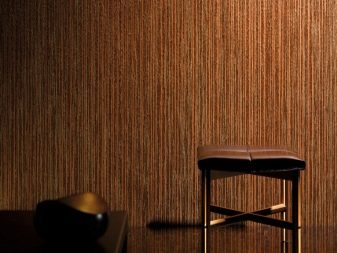
The embossed surface can sometimes wear out, especially if repainting is done too often. Since non-woven and vinyl are polymeric substances, they have low air permeability, so it is not recommended to paste over the spaces near fireplaces and bedrooms with such wallpaper.
But in general, such a coating is very reliable and will last for years, the main thing is to follow all the necessary instructions for its use.

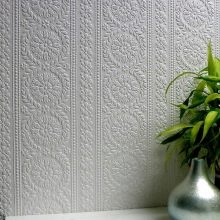
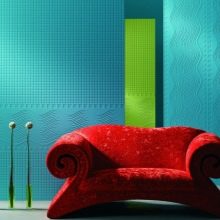
Glass fiber
They are also called fiberglass or fiberglass, their production technology is fundamentally different from other types. Their production is based on lime, marble and quartz sand and fiberglass fabric. By means of a special technology, fiberglass fabric is combined with a paper base, which makes it possible to obtain materials of different textures and densities with a special decor.
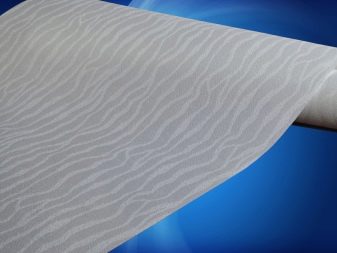

Glass fiber, like vinyl, is very suitable for correcting wall defects (if they are small). Fiberglass strands can be intertwined in different ways, resulting in bizarre patterns in the form of Christmas trees, circles, rhombuses or spider webs.
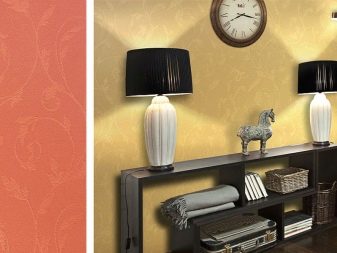
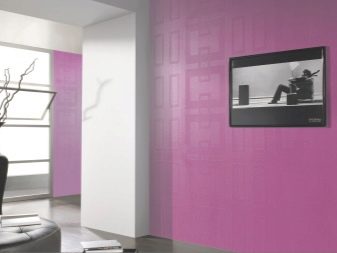
Advantages and disadvantages
Any kind of paintable wallpaper has far more advantages than disadvantages. For example, paper wallpapers are famous for their environmental friendliness, despite the fact that they cannot be called too strong, and if a do-it-yourself repair is planned in the room, then inexperienced gluers can tear them due to carelessness.
However, they are cheaper than the same non-woven counterparts and, despite the fact that any paper base is thin and not considered particularly durable, with careful handling, they can be repainted up to five times.

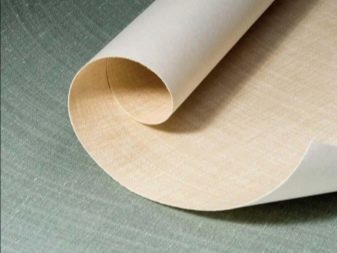
Reinforced glass wallpaper is a product of a high level of strength, therefore, they are successfully used both in residential buildings and in public premises: in administrative institutions, in offices, in clinics and hotels. Such coatings can be safely attributed to the category of washable: they withstand not only wet cleaning with a rag, but also cleaning with a brush.
The only drawback of fiberglass models is that, unlike vinyl and paper, it is very difficult for them to lag behind the surface if it becomes necessary to radically change the design of the walls.
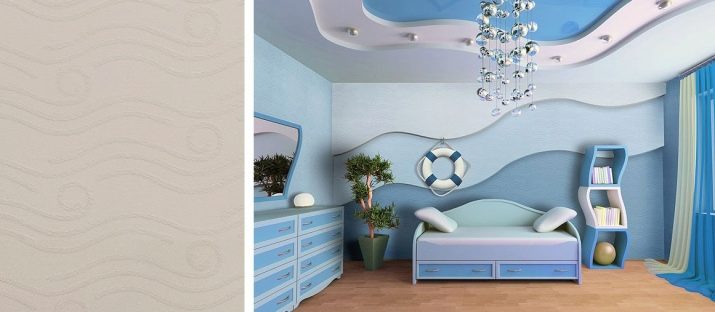
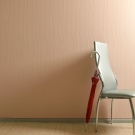
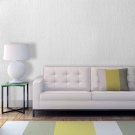
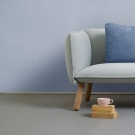
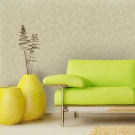

In general, each paintable coating has common advantages in the form of practicality, ease of use and room for creativity. If the child decides to paint on the wallpaper, and the paint is preserved in the house, with which the surface was originally painted, you can easily paint over all the drawings and there will be no traces left.
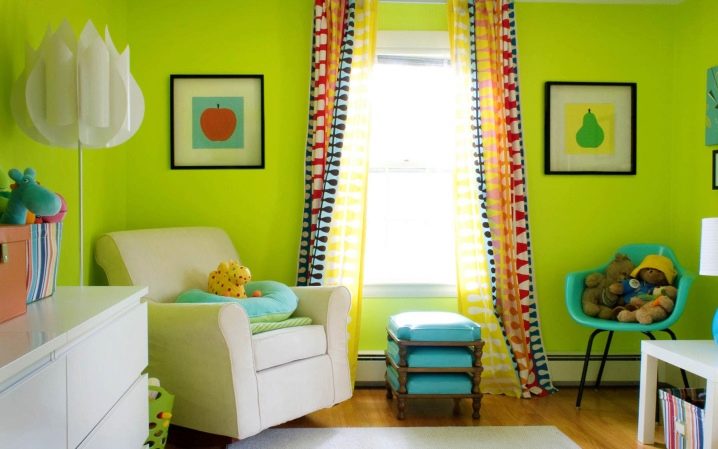
Also, paintable wallpaper of good quality increases the sound insulation properties of the room and retains heat well, especially when it comes to models that can shade small cracks in the walls. As for the shortcomings or features of a particular type of coating - before making a final decision, it is important to familiarize yourself in more detail with the specifics of the use of all varieties, so that you do not make a mistake when buying and make the right choice.
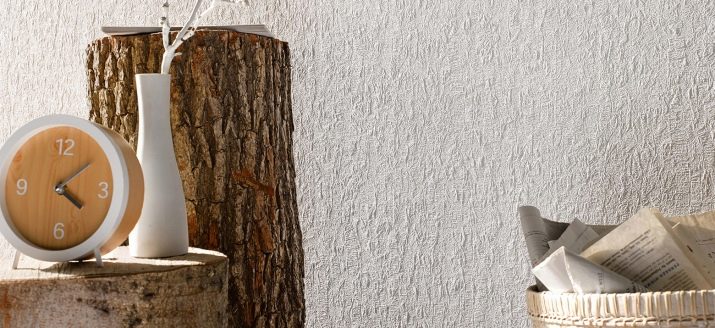
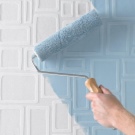
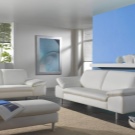
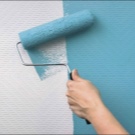

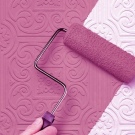
By the way, depending on the quality and variety, certain types of such wallpapers can be repainted twenty times or more, especially if the same color or tone is used, close to the original.
In addition to fiberglass varieties, all other models can be easily removed from the walls, and surface preparation is simple.
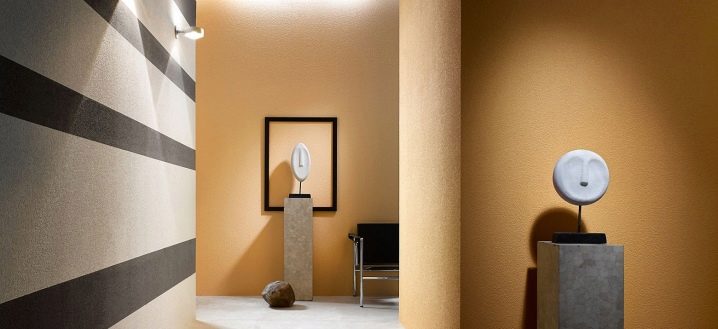
Colors and textures
Models of white or cream colors of different shades are available for painting, it depends on the materials that make up them. Such a surface can be painted using a specialized paint designed specifically for this purpose.
Colored paints for wallpaper are absolutely unlimited in assortment: you can choose a color and shade for every taste.
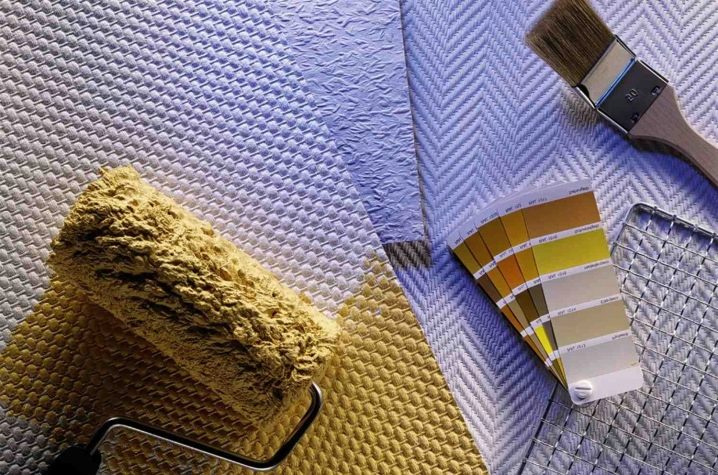
As for the texture of wallpaper, the very concept of "texture" refers to the very patterns in the form of embossed lines that are applied to the front side using special technologies. The choice of texture should not be taken lightly. It would seem that it is easy to choose wallpaper for painting, because their color can be any, but the pattern itself, especially when it acquires certain outlines after dyeing, will also be of decisive importance for the room.
The color of the wallpaper, if desired, can always be changed, and the pattern will remain the same, therefore, the choice of texture should also be taken especially seriously.
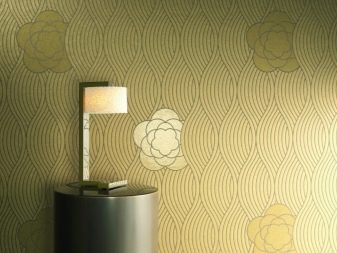
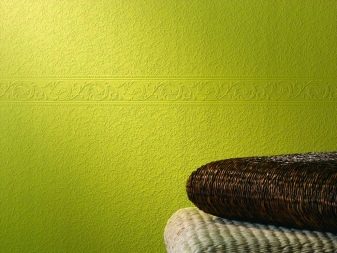

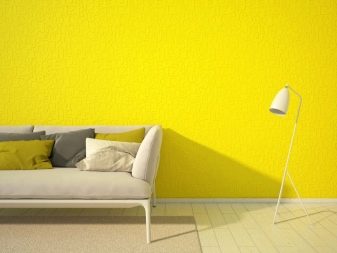
With a close examination of a particular model of wallpaper for painting, you can find that the very shape of the picture can be either ordered and clear, or not have clear outlines. Today, for example, chaotic mixing of lines and colors is fashionable, which, of course, is reflected everywhere, including in the creation of textures for wall coverings of various types.
Each person has their own taste and preferences:
- If the decision is made to opt for a chaotic pattern, a print with a small texture and rounded outlines will be perceived by the eyes much better than a rough jumble of lines.
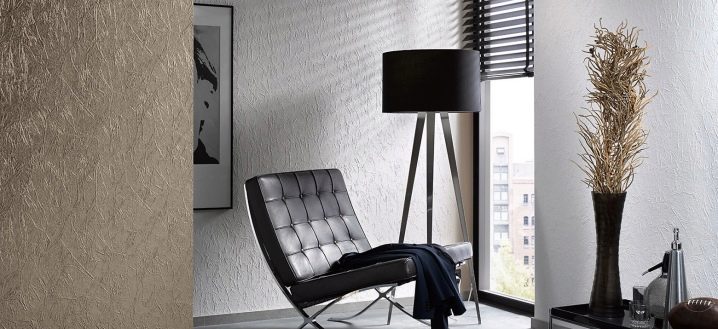
- If you prefer a "classic" pattern with a repetition of an ornament or figures, smooth lines should be preferred in this case: after painting, such a pattern will look lively, pleasing to the eye and will not cause boredom among the guests.
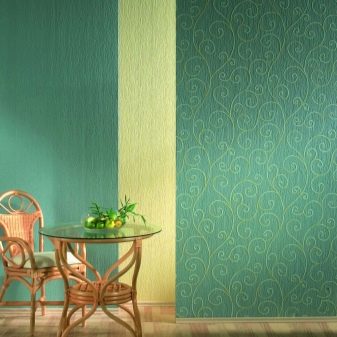
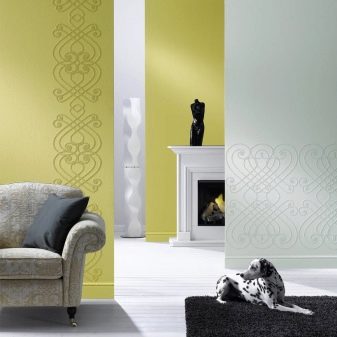
- If the drawing is selected for the obviously strict classical interior, it is better to give preference to the maximum simplicity of the contours, with repetitions of the same figure or flower. The shapes of the main element must be correct, symmetrically alternating with each other.
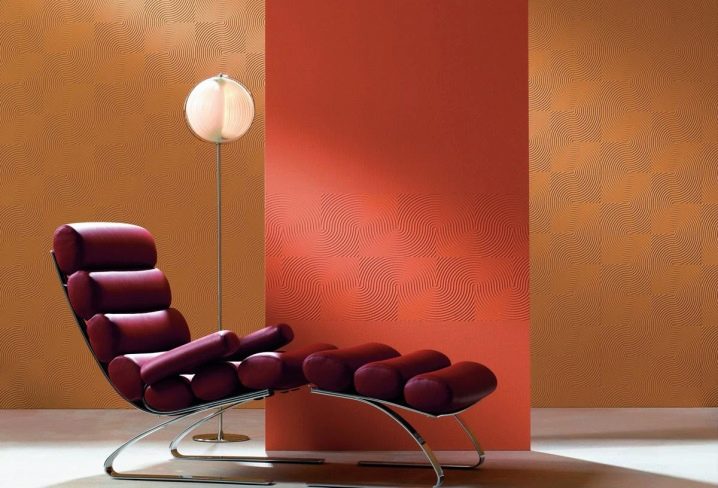
There are also textures that imitate the shape of a stone, brick, cracked plaster or paint. Such wallpapers are ideal for art spaces and habitats of creative people who prefer modern interior solutions - eclecticism, loft and minimalism.
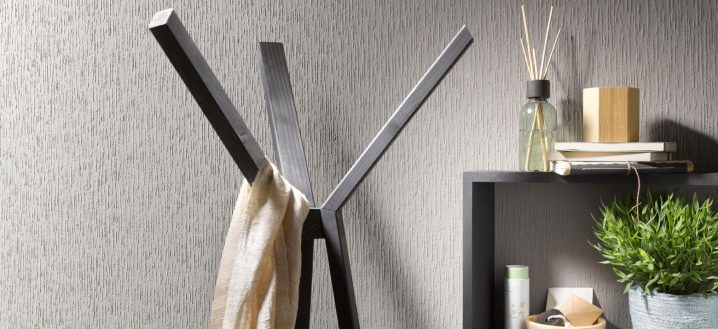
The size of the pattern or design also matters a lot:
- If you intend to focus the guest's attention specifically on the wallpaper, then a large pattern will be the best choice.
- If you want to focus the attention of visitors on pieces of furniture, the best option would be to purchase wallpaper with a small pattern in order to create an advantageous background for the interior space.
- For a small room, it is also recommended to select wallpapers exclusively with a small pattern or completely smooth: if the pattern is too large, the already small room will visually "narrow" and look even smaller than before.
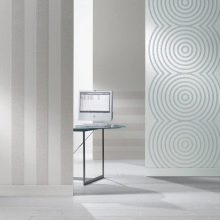
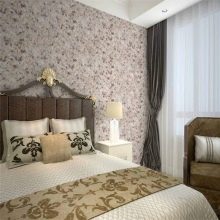
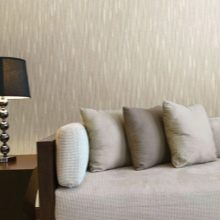
Since the market of finishing materials offers a very wide selection of paintable wallpaper, it so happens that it is difficult for the buyer to settle on any particular texture option. In addition, sometimes people come to the store for wallpaper, not being sure of how they decided to furnish their home.
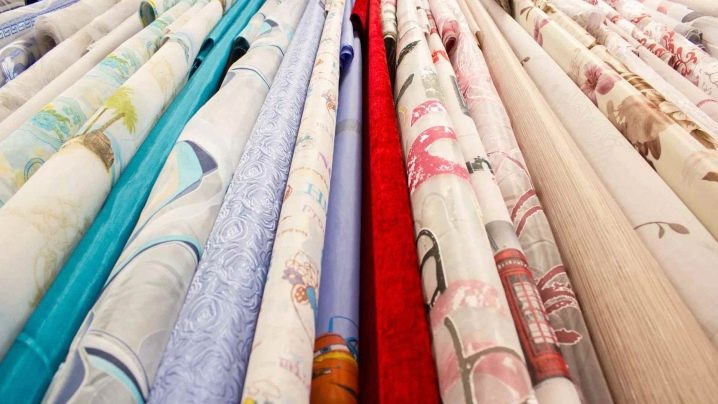
By the way, wall patterns can quickly become familiar and boring. In this case, the ideal option is absolutely smooth wallpaper, which, at first glance, looks rather dull and unattractive. However, in fact, their advantages are undeniable: firstly, a smooth matte surface is the easiest to paint, and secondly, coloring can be turned into a fascinating creative process: for example, by yourself creating colorful wallpaper from a white canvas into a bright vertical strip, visually increasing the height ceiling.
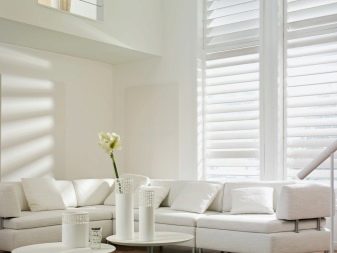
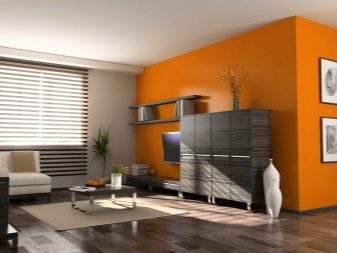
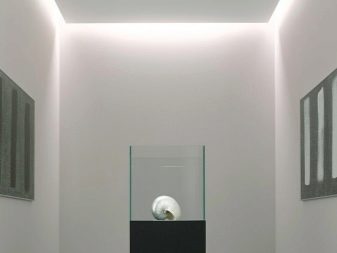
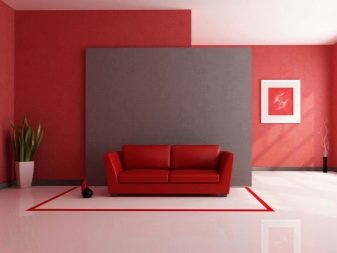
Any light wallpaper without a pronounced texture can be easily repainted in the desired color quickly and efficiently. Therefore, it is worth taking a closer look at the most unpretentious models: after all, you can not just paint them in a solid color, but make drawings or prints on them with your own hands.
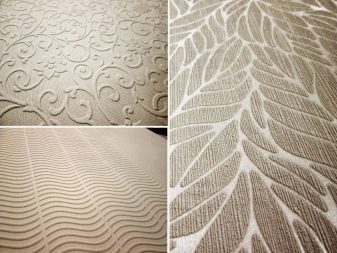
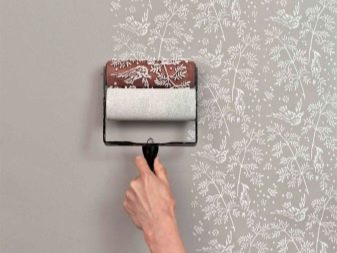
Dimensions (edit)
Roll sizes vary. They do not have specific standards, but most often on sale you can find the following parameters: 17x0.53 m, 25x1.06 m, 33.5x 0.53 m and 125x0.75 m (for pasting large rooms).
Based on these common sizes, it can be seen that any of them exceed the classic versions of wallpaper 10.05x0.53 m.
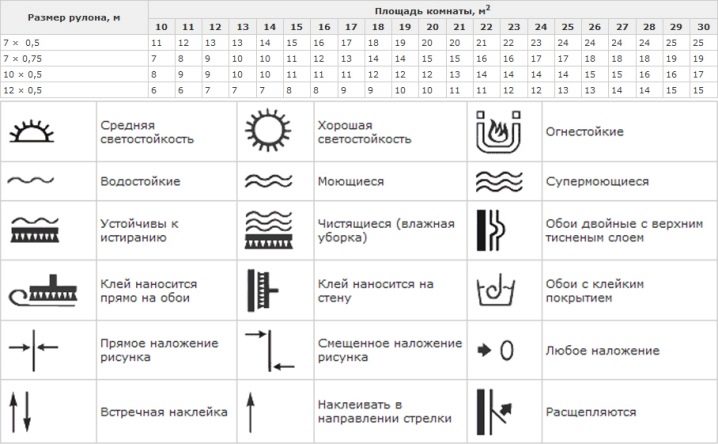
Increasing the length somewhat complicates the pasting process, but significantly reduces the amount of waste, and the large width masks the joints well. This gives the impression of a seamless wallpaper texture and gives the room a harmonious and holistic look.
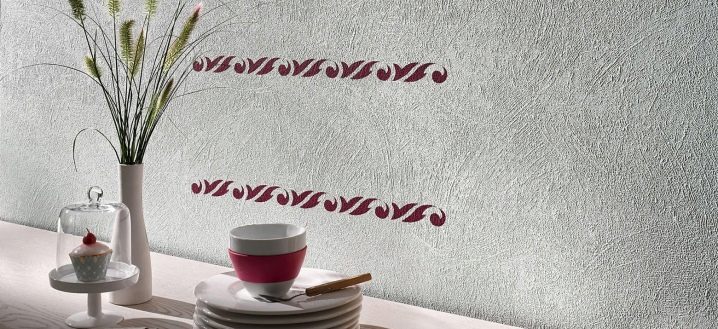
Which ones to choose?
Of course, you should choose the type of wallpaper for painting, guided by both material capabilities and the characteristics of the room in which they are planned to be glued.
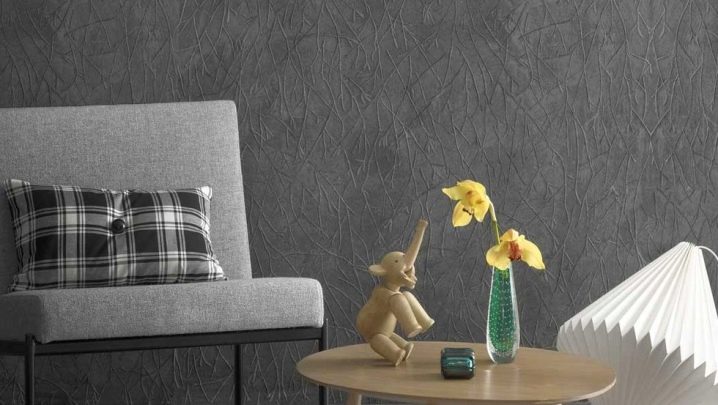
For ceiling
Many people ask if this type of wallpaper can be glued to the ceiling and which one is better. There are no special “ceiling” types of coverings, but wallpaper on a non-woven backing with a foam vinyl coating is best suited for pasting the ceiling. They are always glued end-to-end, therefore they do not require adjustment of the pattern and "overlaps", which greatly facilitates the laboriousness of the process, and possible defects that arise when working with them, after drying, are easily masked with paint.
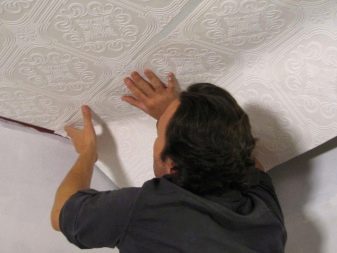
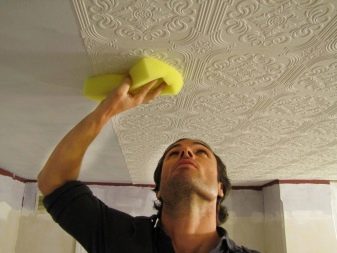
For walls
For walls, you can use any model, the main thing is that they correspond to the specifics and general interior orientation of the room. Anti-vandal wallpapers are popular and reliable on the modern market, which are ideal for decorating almost any room. Manufacturers recommend using them in public places, this is probably dictated by the fact that thick and massive coatings can look heavy and not entirely comfortable, but with the right organization of the creative process, this option can become the most versatile and attractive.
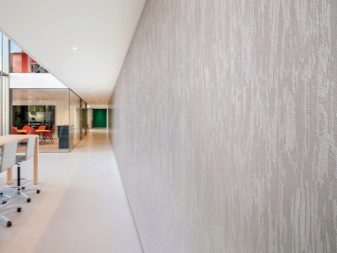
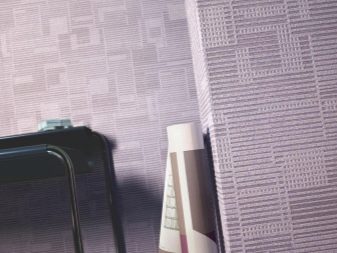
The durability of anti-vandal paintable wallpaper is significantly enhanced, if their production uses the technology of reinforcement using fibers of natural and artificial origin for the inner layer. In this case, the outer layer is made of a material that has a special wear resistance. According to customer reviews, the best designer wallpaper with enhanced anti-vandal characteristics is the Welcome Color Choice model.
Such wallpapers are made on the basis of cotton, and their outer covering consists of a thin layer of Teflon, which reliably protects them from all adverse external factors.
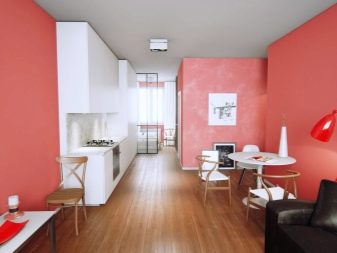

Warm-tinted anti-vandal flooring will look good at home:
- In an ordinary apartment and even in a living room, if the interior itself is not particularly pretentious and extravagant.
- This is a "saving" option for a children's room and a family where pets live, since such wallpapers are perfectly protected from mechanical damage.
- In the hallway and kitchen, they will also serve for a long time and not lose their original brightness, and this is especially important, because it is there that the coatings will always have contact with outerwear, shoes and contaminants associated with cooking.
If the anti-vandal wallpaper is of good quality, its service life with periodic re-painting can be 40-50 years.
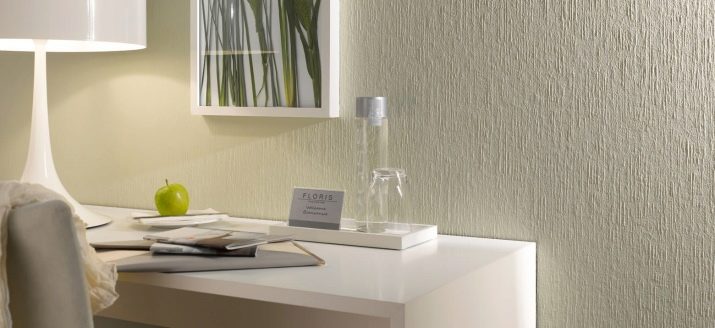

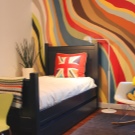
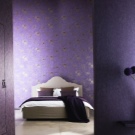

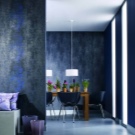
Of course, not everyone can afford to purchase such a universal wallpaper, despite the fact that they can be glued everywhere. The price of anti-vandal coatings, as a rule, is very high, and not all buyers can take advantage of such an offer.If you look through the catalogs of trusted manufacturers, you can find elite paintable wallpapers, the price of which will be surprisingly affordable due to the fact that the assortment may include unsold last year's collections.
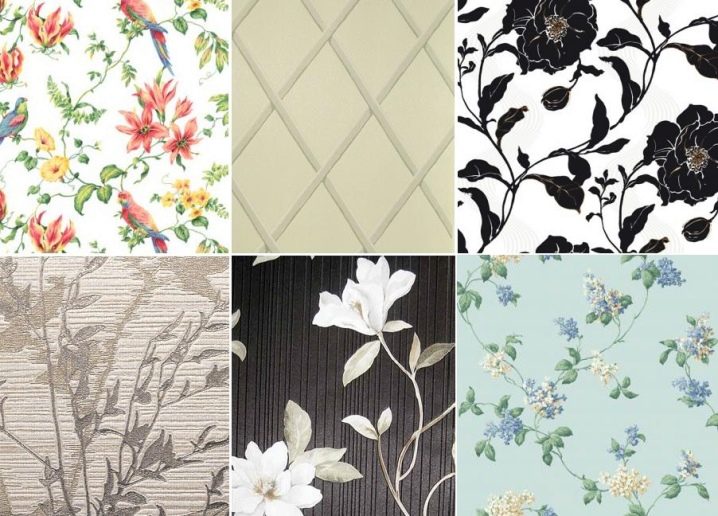
This is how you can choose reliable non-woven vinyl coverings that are not afraid of sunlight, dust and are protected from absorbing unpleasant odors. As for design solutions, there is always the opportunity to choose some original model of an exclusive plan, which, provided that it is properly glued and painted, will look no worse than a work of art.
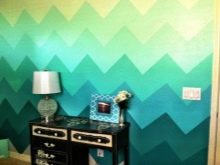
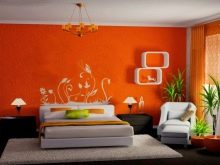
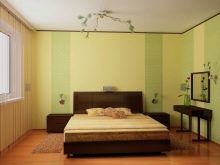
For a balcony and a loggia, wallpaper must be selected based on which side the balcony is on. If it is a sunny side, it is recommended to use light colors for painting, which are less susceptible to fading. With an insulated loggia, wallpaper options can be any, even paper, but it is still better to use moisture-resistant non-woven coatings. It is better to choose a single-color pattern, and the width of the rolls is larger, because this will speed up the gluing process, and there will be much less joints (this is important because they are often striking in a small space).
When pasting a balcony or loggia, it is recommended to use glue intended for heavy types of wallpaper, and it is better to dilute it thicker: so that it resembles sour cream in consistency.
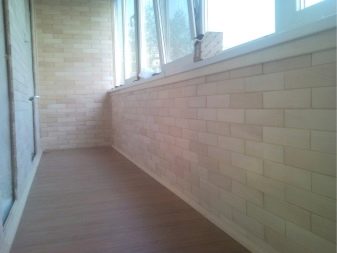
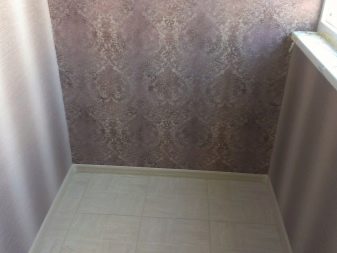
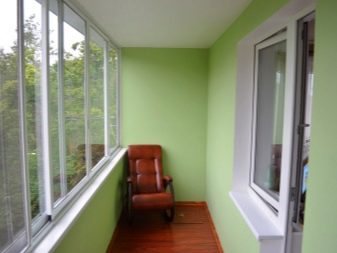
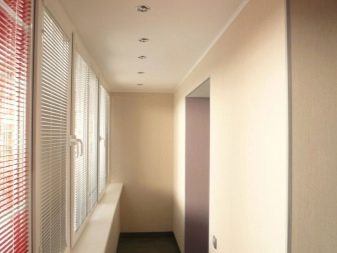
For the bathroom, fiberglass wallpapers are best suited due to the fact that they are not at all afraid of water and high levels of humidity. As already mentioned, they can be freely washed and even brushed, so it is best to purchase just such a model by painting it in any suitable color, for example, blue, beige or pale turquoise.
When pasting, it is important to use primers and special compounds designed to work with fiberglass.
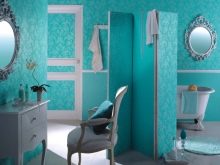
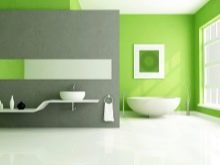
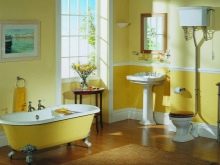
Those who are especially concerned about the problem of the presence of joints, designers advise to think about purchasing seamless wallpaper for painting. At first glance, this may seem surprising, but such models also exist. Moreover, the technology of making seamless wall coverings came to us from ancient times, when they were made not from paper or fiberglass, but from expensive fabrics.
The main feature of such wallpapers is the width of the canvases, the dimensions of which are much larger than that of all known options for wall coverings: from two and a half to three meters, and the length can be up to 50 m.
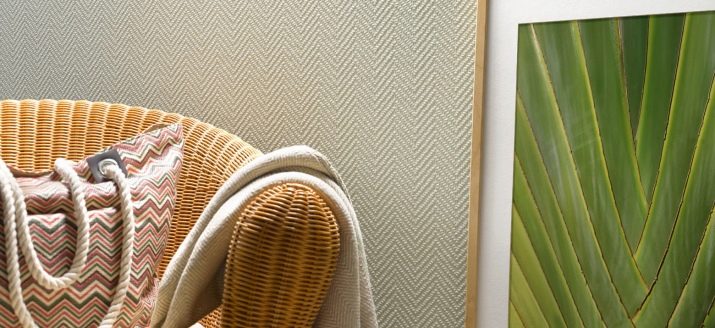
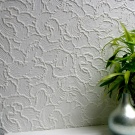
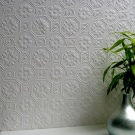
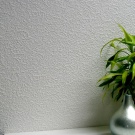
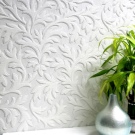
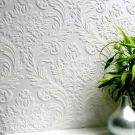
Walls are glued with seamless wallpaper not from top to bottom, but horizontally, in a single strip that is not cut into pieces. The types of seamless patterns can be any: paper, non-woven and fiberglass.
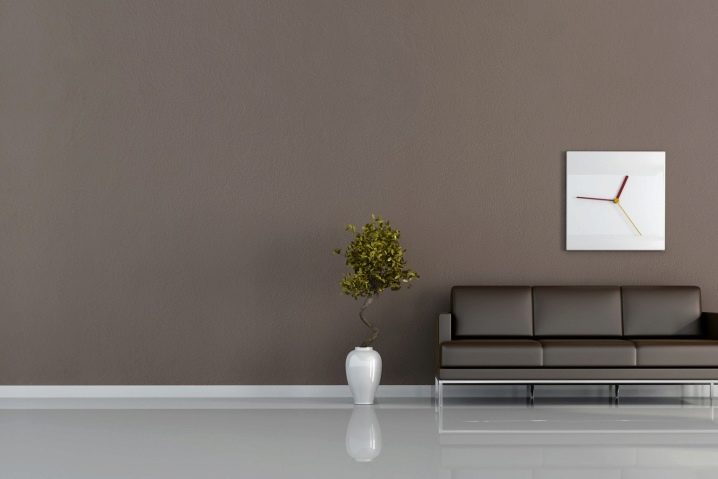
If we talk about the best manufacturers, buyers especially note the German company "Marburg" mainly because the high German quality is in perfect harmony with the affordable price of various types of wall coverings. Stylish wall-paper of the "Marburg" company is characterized by a high level of aesthetics, original patterns, wear resistance and a wide range of products.
The basis for the production of wallpaper by the company "Marburg" are always materials with premium status, which can create a unique home atmosphere of beauty and comfort.
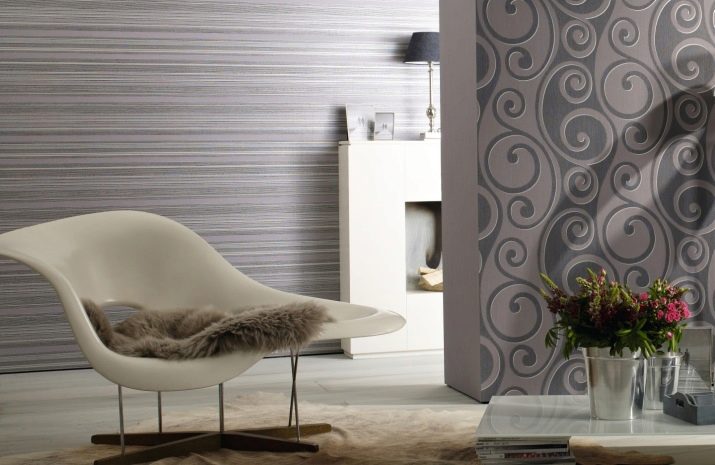
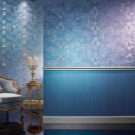
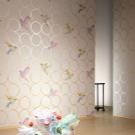

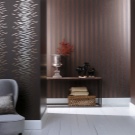
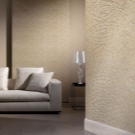
Fashion collections, striking with a variety of colors and textures, are released annually, and good discounts are always made on last year's designs. You can get acquainted with the video catalog of German wallpaper "Marburg" in the following video.
Paint for wallpaper
The choice of paint for wallpaper should be approached competently and responsibly, since there are a lot of dyes on the market. You need to buy paint, focusing not only on the type of wall covering, but also on the room in which it will be used.

All paints are divided into three main types: acrylic, alkyd and water-based.
In addition to alkyd paints, all others are water-based:
- Water emulsions have high viscosity and adhesion characteristics to all surfaces, except metals, however, they do not tolerate high levels of moisture poorly. In this regard, they cannot be used in places where the humidity is very high, because such paint is easily dissolved in water and washed off with it.
The water emulsion is perfect for paper wallpapers that are glued in good living conditions with a sufficient amount of warmth and dryness.
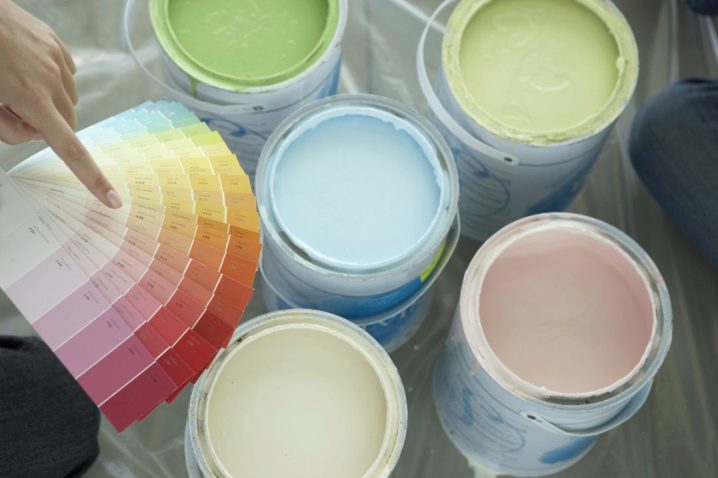
- Latex based paints contain chloride rubber or divinylstyrene and are "relatives" of acrylic. The packaging may be labeled "latex acrylic paint". They are water-resistant, durable and flexible, help to hide small imperfections in painted surfaces and are ideal for decorating the walls of bathtubs, saunas and even large swimming pools. Separately, it should be noted the excellent combination of such dyes with non-woven wall coverings, as well as with fiberglass. Latex should not be used to paint the nursery and the bedroom, because under their influence, the air circulation between the surface and the walls is disturbed.
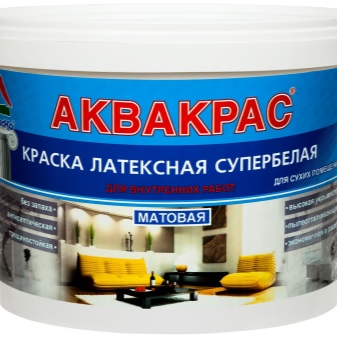
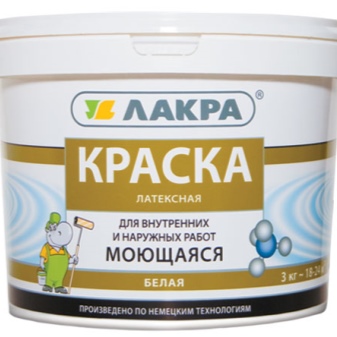
Latex paint is available in white, and other shades can be made using a color scheme, however, the tones will be extremely soft and pastel, and bright shades will not work, this must be borne in mind.
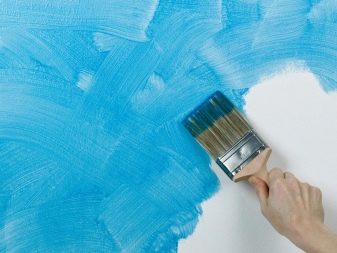
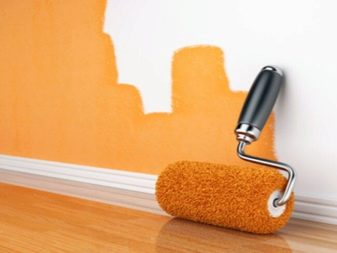
- Acrylic paints are known to everyone, because they are used everywhere and not only for the purpose of coloring wallpaper. Their popularity is growing because they are virtually odorless and dry quickly. They can be used to paint paper, non-woven and fiberglass in any room.
An additional advantage of acrylic paints is that they necessarily contain substances that prevent the appearance of fungus.
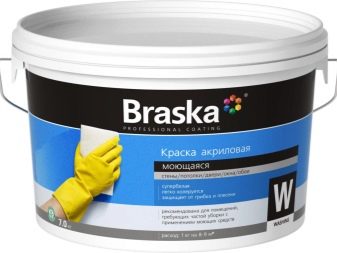
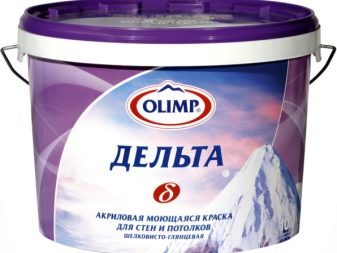
Acrylic-based dyes are also available in white and need color schemes, but they provide especially bright and colorful shades that modern designers love to use so much.
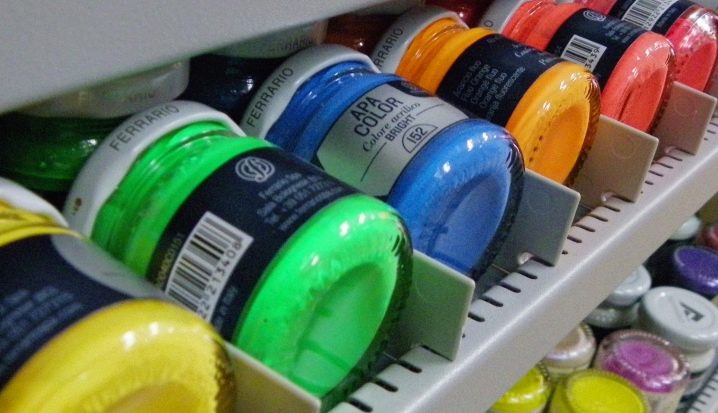
- Concerning alkyd paints, it is important to know that, unlike acrylics, they contain substances in the form of resins and recycled oils that can harm human health. Therefore, it is categorically not recommended to paint wallpaper in residential premises with alkyd paints, and when buying it is important not to confuse the alkyd version with the acrylic one.
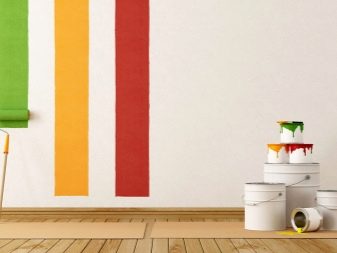
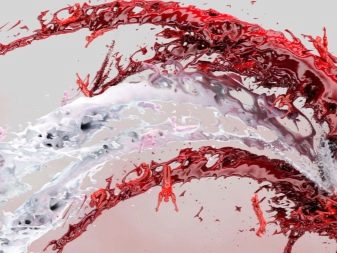
However, for the decoration of public places, alkyd paint is best suited due to its high resistance to moisture and sunlight and the presence of antifungal components in it. Alkyd has high adhesion characteristics to surfaces, and is most often produced in spray cans, with which you can create interesting design compositions with your own hands.
The only drawback is that over time, such paint may fade, and the surface will need to be repainted.
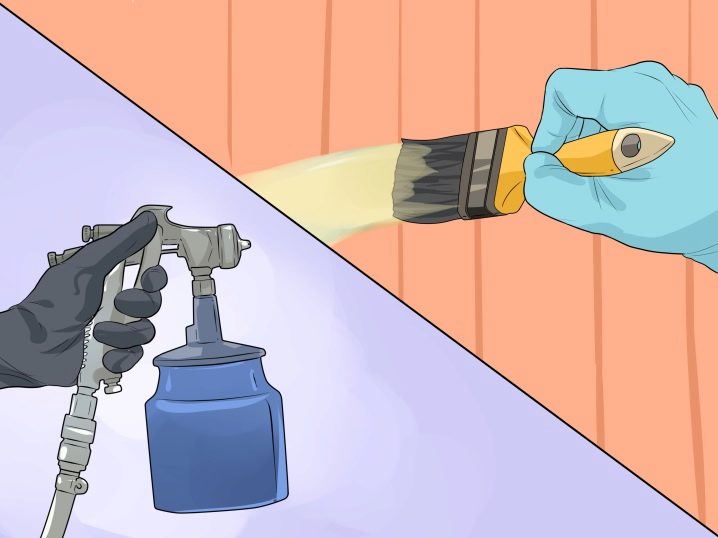
Any kind of paint can be used to paint paper wallpaper (of course, considering whether it is living space or not). For paper, latex is the best staining option: it does not weigh the tapestries and improves the strength of the wallpaper. For coloring paper coverings in residential and sleeping areas, you can and should use a water-based emulsion: it is safe for health and is inexpensive.
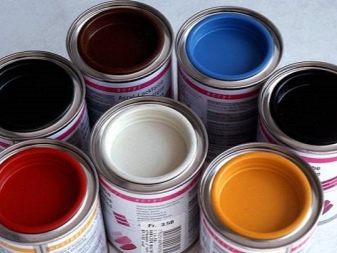

Non-woven wallpaper lends itself well to painting with acrylic or latex. By the way, non-woven fabric can be painted on both sides, not just on the outside. The paint is applied to the reverse side of the canvas, and after it is completely dry, the strip is glued to the wall. Thus, the paint will begin to bleed through on the front side only in places where there is no polymer substance. The tone itself will change slightly, which will provide a more attractive texture to the front side of the wallpaper.
If the wallpaper for painting has a completely vinyl composition, it should be painted only with acrylic, if desired, both sides.Fiberglass models are also painted with acrylic or latex - this is how their texture is favorably emphasized.
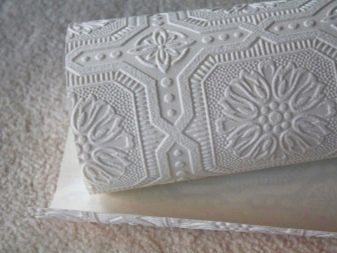
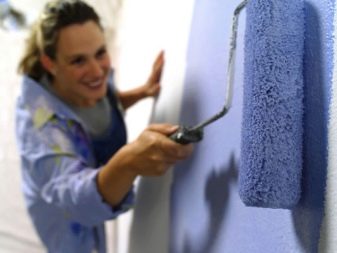
Among the popular foreign paint manufacturers are the following:
- For wallpaper, one of the best is the firm Vincent (France), which manufactures the famous matte paint "Conformat".
- Also popular among professionals is the company Dulux (England), producing high-quality types of paints for different types of wallpaper.
- Of course, one cannot fail to note the Finnish company "Tikkurila", which is especially famous for the Joker paint, which has a deep matte shade.
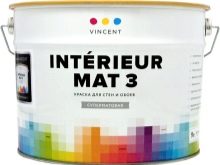
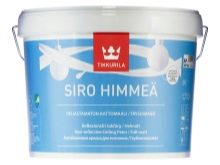
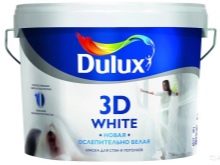
- Domestic manufacturers are trying to keep up with foreign colleagues. So, a manufacturing company "Rogneda" produces good matte acrylic-based paints, and the firm "Tex" specializes in the manufacture of latex-acrylate options for coloring wallpaper.
All manufacturers have an excellent reputation, and the quality of their products has been repeatedly confirmed through numerous surveys among consumers.

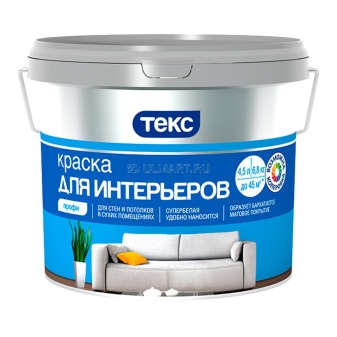
It is not worth buying paint in questionable places, even if it is very cheap. It is better to buy it in a good hardware store, where you can familiarize yourself with all the characteristics of the product in detail and get recommendations from sellers. When buying, you should look at the date of manufacture of the paint, its shelf life and the quality of the packaging.
It also doesn’t hurt to twirl the paint can in your hands a little and shake it slightly to make sure it’s not thickened or expired.

How to paint and how many times?
All matte types of coloring compositions are recommended to be used if the room is spacious and light. Variants with a slight sheen are best used for coloring resting areas. It is better not to use glossy paints with a pronounced shine in living quarters: glare can cause pain or discomfort in the eyes. Semi-gloss paint can be used to decorate the walls in the kitchen: it lends itself perfectly to cleaning and is resistant to external influences. The satin look of the paint is characterized by a complete lack of gloss, resistance to moisture and a pleasant smoothness, which allows it to decorate any room.
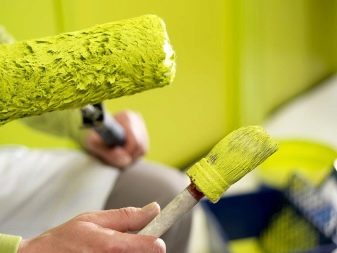
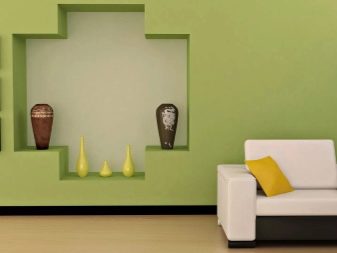
The painting technology itself, regardless of the type of wallpaper, is absolutely the same for all their varieties:
- Before gluing, you need to prepare the walls (and the ceiling, if it is also glued). To do this, you will need to putty large cracks, remove old plaster, achieve even surfaces using the same putty, and if you plan to glue the fiberglass, the surface will have to be primed directly under them using a latex type of primer.
- After gluing is completed, you need to wait a day until the glue is completely dry.
- The paint should be selected based on the type of wallpaper and the type of room.
- To avoid overspending, it is better to pre-select wallpaper models with a low absorbency.
- When working, use a roller (or spray).
- The first layer of paint is applied with thorough impregnation of all reliefs, without smudges.
- If you work with fiberglass wallpaper, stains will always remain after painting. To remove them, the first coat of paint should be applied along the wall, and the second across it.
- After applying the first layer, the painted wallpaper must be allowed to dry for 12 hours, only after that can be re-painted.


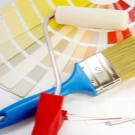
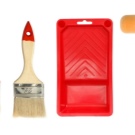
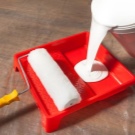
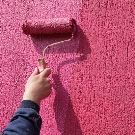
In order to get the desired color, two stains in a row will be quite enough, and in some cases you can even leave one layer of paint if the color turned out to be good, and the staining itself looks even and neat. If you need to paint wallpaper with an "impressive" embossed pattern, professionals advise to use a technology called "dry brush": dried light pigment of paint is applied to the protrusions.
This will also provide visual expansion of the space.
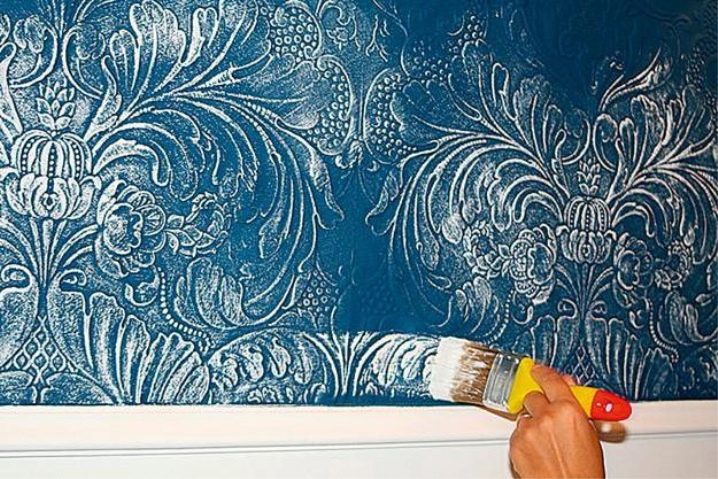
Decorating
When decorating wallpaper for painting, the unity of style should be observed so that the necessary harmony and comfort are preserved in the room. If you want to combine wallpaper models that have different shades of color, it is recommended to use the so-called graphic color wheel, thanks to which you can successfully combine the twelve main colors and their different shades with each other.
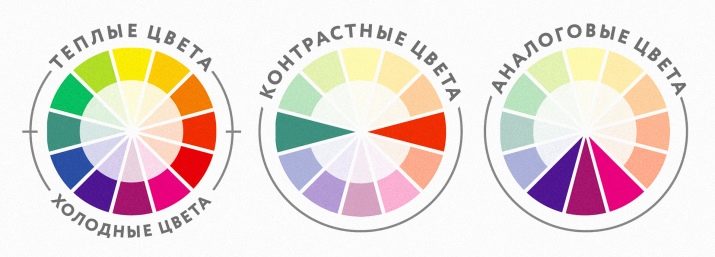
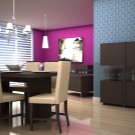
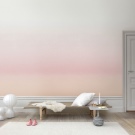
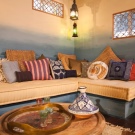

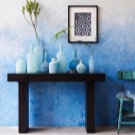
If a combination of different wallpapers is used in the interior, it is important that both are similar in terms of design. Their elements should be harmoniously combined and overlap with each other.
Examples of such connections are often different shades of the same tone or drawings made in the same stylistic direction.
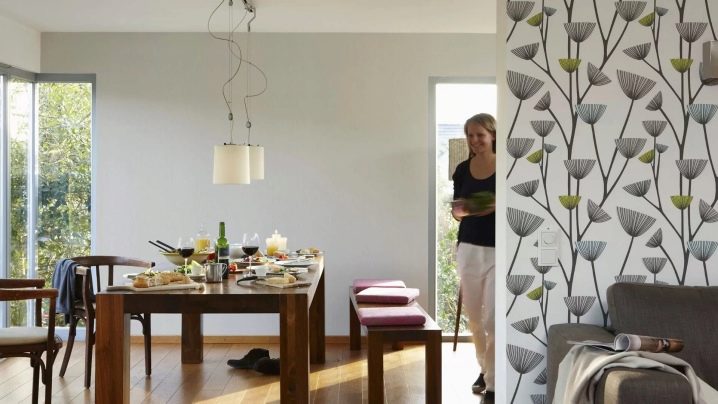
Decor options:
- Ornaments in the form of flowers are ideally combined with patterns made of wood and glued on top: this gives them volume and liveliness. You can draw an original line between multi-colored wallpaper using decoration in the form of polyurethane pilasters, having previously painted them in the color that will correspond to the main range.
These can be light slats made of wood, as well as bamboo stalks, divided into two parts.
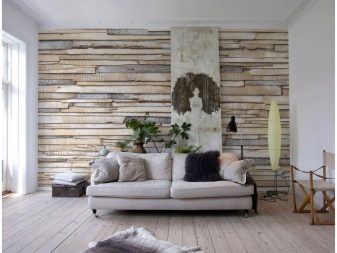
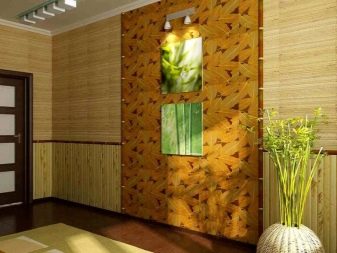
- An interesting way of decorating can be applied already in the process of painting the wallpaper, which will look spectacular and attractive. For example, the main layer of paint can have a bright tone, and when it dries, an azure is applied on top with "flakes" of different colors or white, reminiscent of snow.
If you apply pure azure to a brightly colored wall, the surface will acquire a pronounced shine with a pleasant iridescent shade.
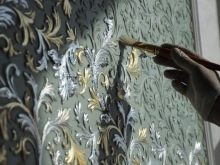
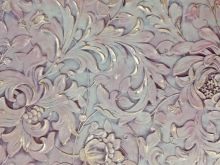
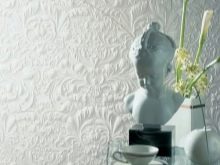
- The traditional patterned border never goes out of style and is the easiest way to decorate. Ideally, it should correspond to the main shade of the wallpaper, and the colors on both sides of it can be either the same or completely different: for example, the yellow bottom will be in perfect harmony with the beige top, and the border itself can be made as a combination of these two colors in the form of an intricate pattern.

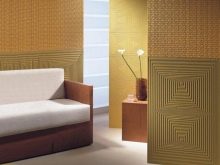
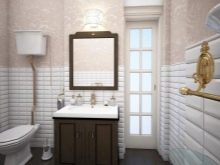
- For those who are just starting their experience in design, we can recommend one of the easiest ways to decorate walls. The point is that two layers of paint are used in a specific sequence. After applying the first layer, you need to wait until it is completely dry, and then apply the second one, preferably with a small toning machine.
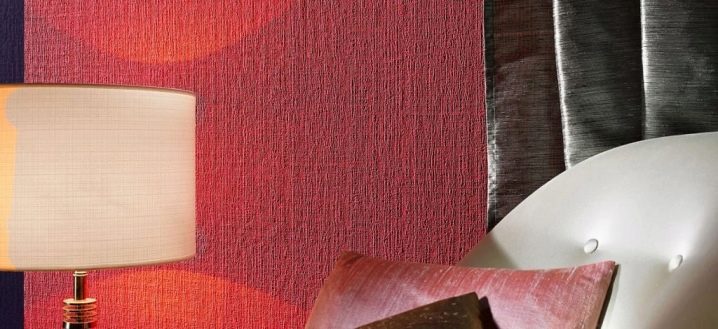
- Stencils and monograms are a classic way to decorate walls. If you plan to use a pattern made on a stencil, the wallpaper should be smooth and better monochromatic: this will help to highlight and emphasize the texture of the pattern against the main background. By the way, since acrylic paints are often used when painting wallpaper, you can take care in advance to purchase a sufficient amount of them for the subsequent decoration of the walls after the main painting of the wallpaper is completed.
The pattern is applied with the same acrylic paint, but in a different shade, and if necessary, it can be additionally fixed with varnish.
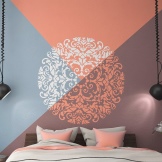
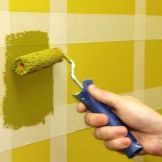
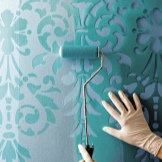
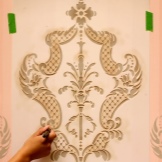
- When combining both the wallpaper itself and the decorative elements, it is important to remember that the ensemble is one and not a single element stands out from the overall picture of the interior. It is this approach that will ensure the most comfortable stay in the premises of both the owner himself and his visitors, without causing inconvenience and irritation.
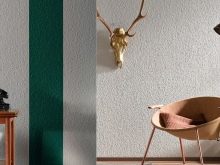
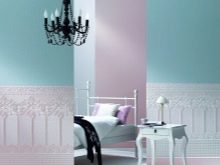
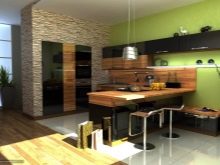
In order to decorate the wallpaper yourself, there are various stencils of the usual plan on sale, as well as stencil blanks in the form of rollers, which allow you to decorate the wallpaper with the same pattern along the entire wall.
If desired, the blanks are made independently: from scotch tape, foam rubber or cardboard.


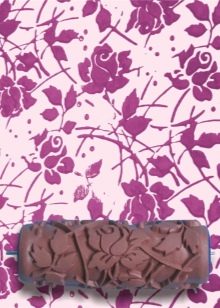
Popular and ready-made vinyl stickers are a great alternative to stencil decoration, but their price is quite high, although they are worth it: with their help, the room will look beautiful, original and especially bright.
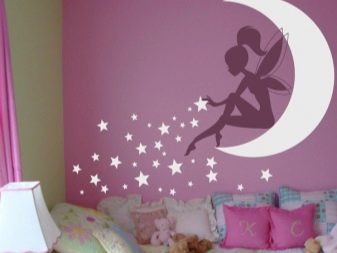
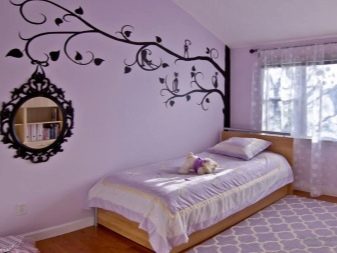
If the owner of the wallpaper for painting has good drawing ability, you can paint the walls with popular motifs from the flora and fauna. As already mentioned, for this you can use acrylic paints, the colors and shades of which can be made especially bright. However, the painting can be more monochrome, "in tune" with the main color of the wallpaper. It all depends on the overall picture of the interior and on the designer's imagination.
The sketch is created with a pencil, and then gradually supplemented with paints and brushes.
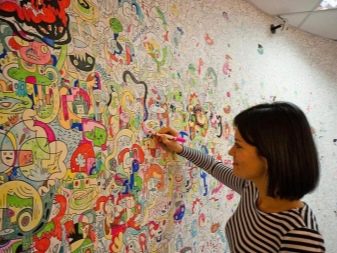
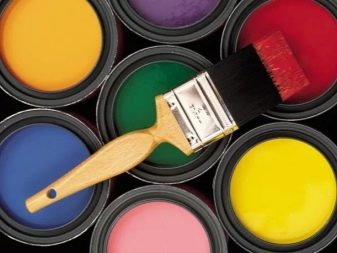
In order for the applied drawing to look more impressive, it is recommended to paste over the room in advance with smooth wallpaper for painting. Then the painting will look bright and attractive, especially if the background is thought out in advance and painted over with great care.
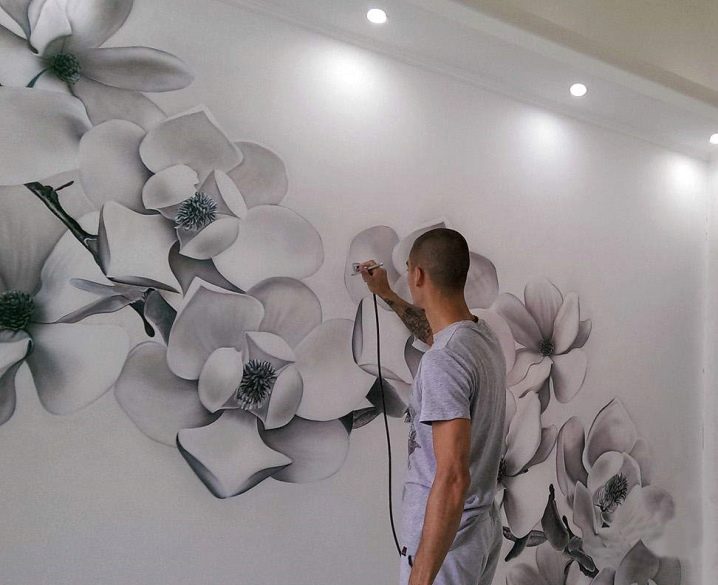
In order to give the interior originality, there is a kind of paintable wallpaper with a ready-made pattern in 3D. In this case, it is not recommended to use such patterns throughout the room, it will be best if you select one of the most significant zones with it.
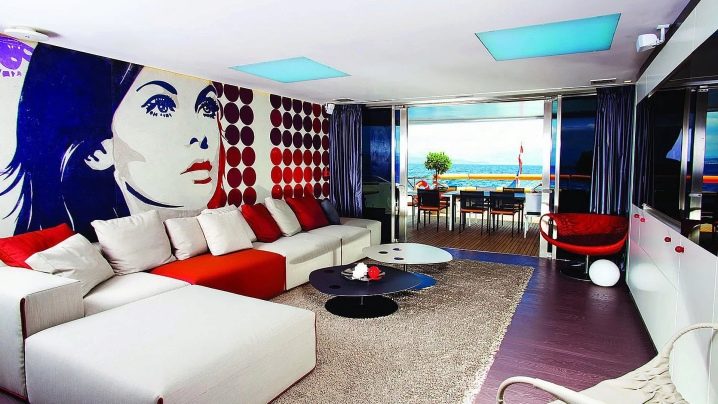
Ideas and options in the interior
Wallpaper for painting is universal in that the colors can be selected, depending on the style in which the interior already exists in the room, and if the situation changes, the color of the coatings can also be changed:
- For a classic interior, wallpaper painted in calm pastel colors: from beige to brown, is perfect. It is better to choose an embossed drawing, with a clear texture and severity of lines, which will emphasize the "equanimity" and aesthetics of the classics. In this case, painting smooth wallpaper can be done in one layer, on top of which large flowers are applied with your own hands (most often, using stencils).
If there is no drawing ability, it is better to limit yourself to non-woven or paper models with a ready-made pattern, painting the wallpaper in two layers, which will make the drawing clearer, and the tone itself is as thick and saturated as possible.
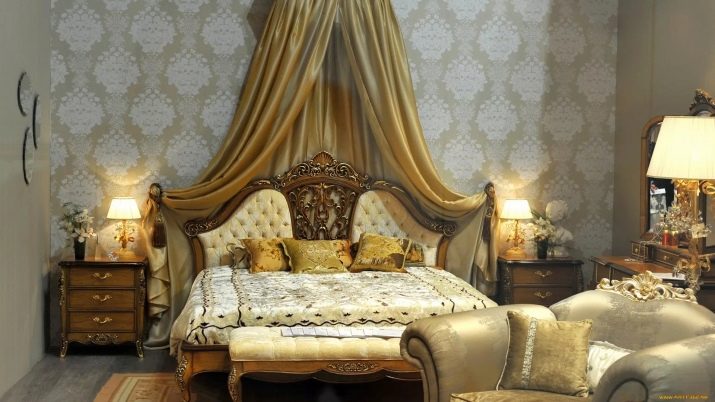
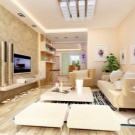
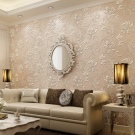
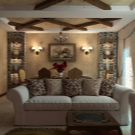
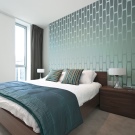
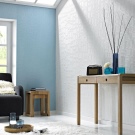
- Modern interiors, as a rule, do not require clarity and strict approach to the choice of color and texture of wallpaper, especially when it comes to such interior solutions as minimalism, hi-tech or other types of eclectic trends. In order for the wall covering to perfectly match the chaotic lines of modern furniture and the bizarre mix of materials, it is recommended to use bright acrylic colors for painting the wallpaper, choosing colors for diluting the paint that correspond to the main color direction in the room.
The combination of yellow and blue, as well as red and orange colors will look modern, stylish and original, provided that the furniture is just as bright and festive.
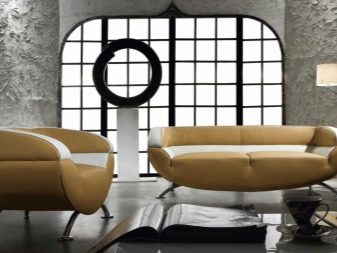
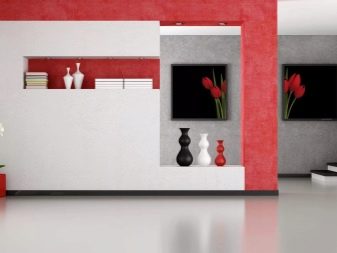
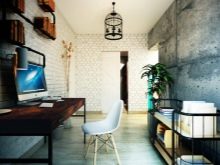
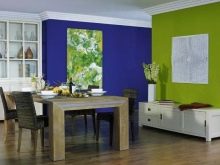
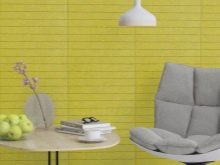
- For those wishing to decorate their home in the Scandinavian style, when coloring the wallpaper, it is recommended to use discreet but light colors: white and all possible shades of gray. This range will ideally brighten the twilight and dark seasons and give the room the effect of additional light and warmth. You can paint the wallpaper in a solid gray color, and on this background place a large or small pattern in a darker tone using a stencil. The size of the picture should be selected, depending on the size of the room: if it is large, flowers or patterns should be made large, and if small, it is better to limit yourself to wallpaper with a small factory print, because it will take a very long time to apply a small pattern on your own.
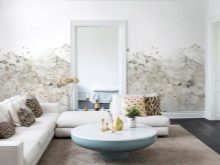
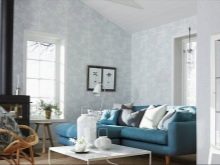
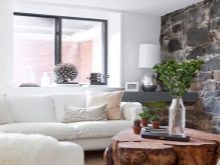
You can also paint the wall just white, without using any tinting: it will always look fresh and relevant, especially when it comes to wallpaper with a relief type of pattern.
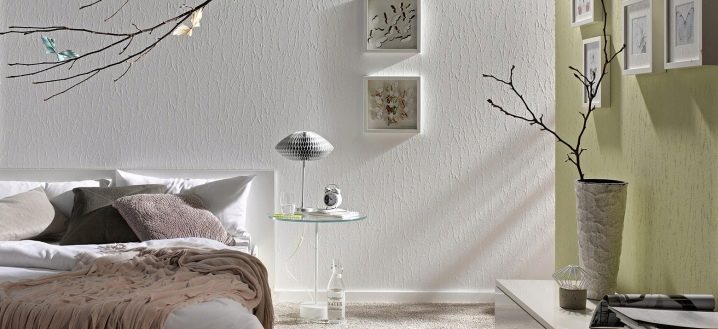
- The loft style is characterized by the use of wall coverings in the form of brick, stone, concrete and even old plaster.Due to the growing popularity of this style, designers have developed types of wallpaper with a corresponding pattern. If desired, you can purchase durable fiberglass wallpaper or anti-vandal for such purposes, and then "age" them using sanding, having previously painted in a suitable color.
It is for such purposes that there are durable models with large fiberglass threads, which, when properly stained, will look in accordance with the loft or country style, depending on the wishes of the owner.
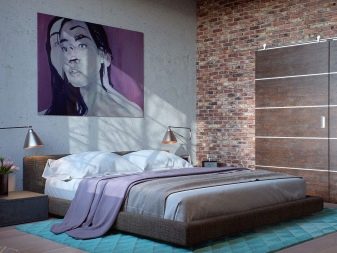
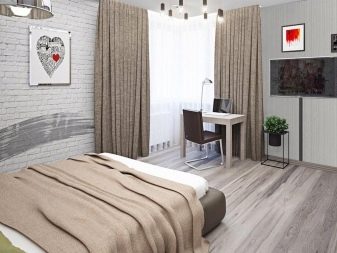













The comment was sent successfully.